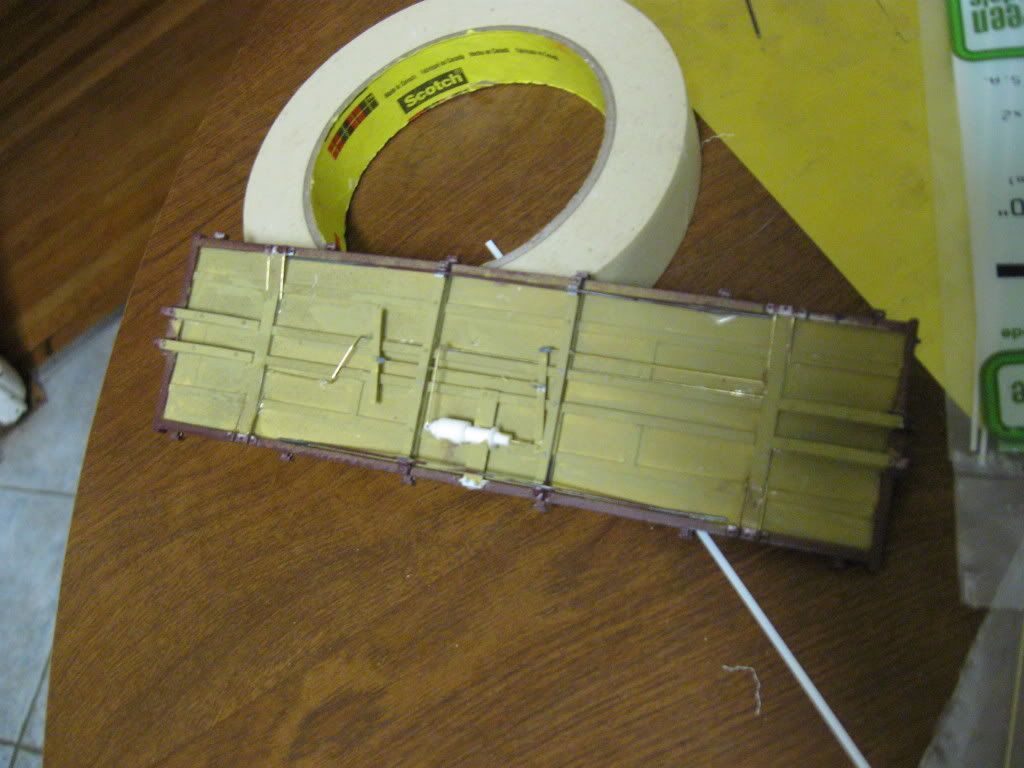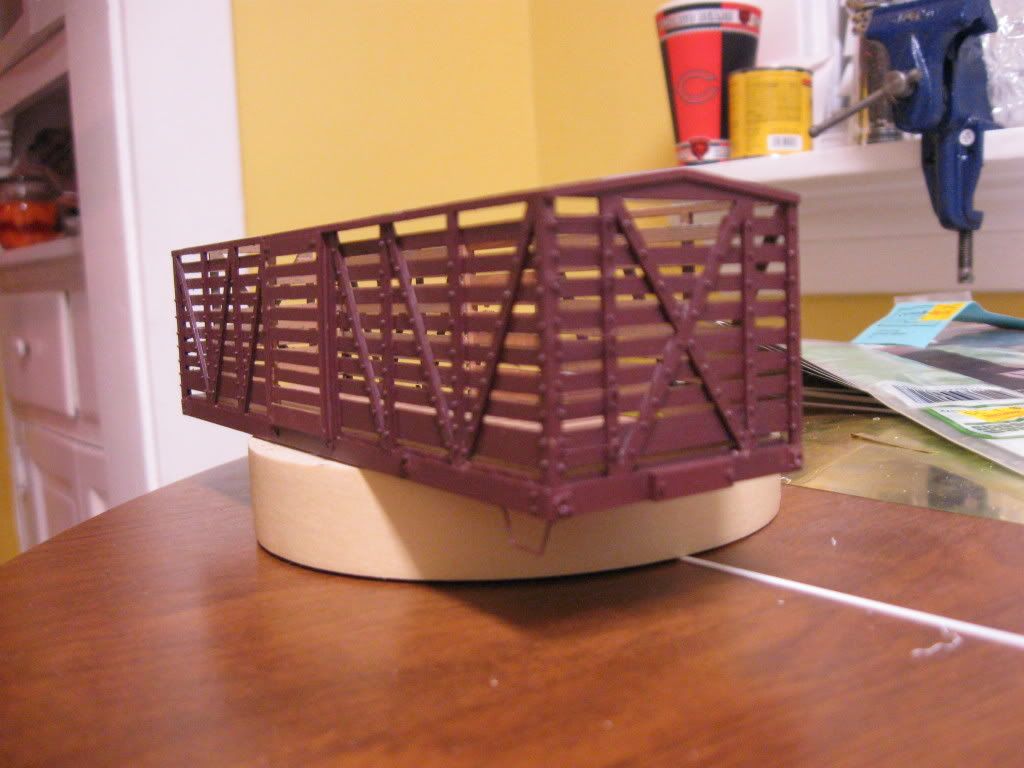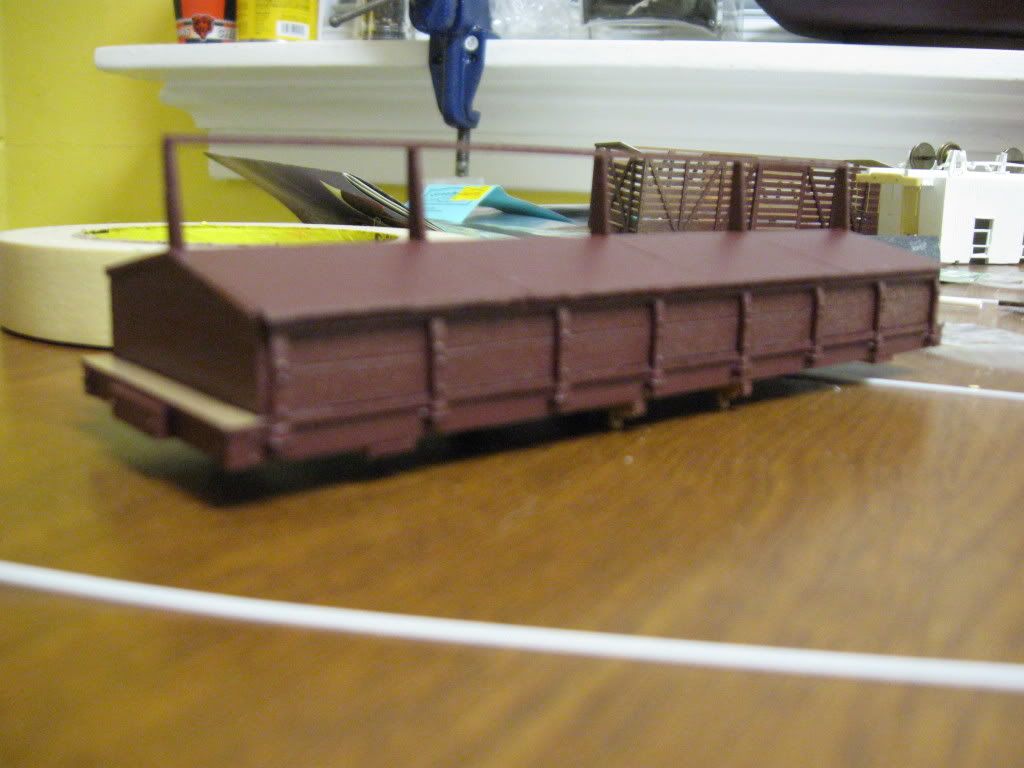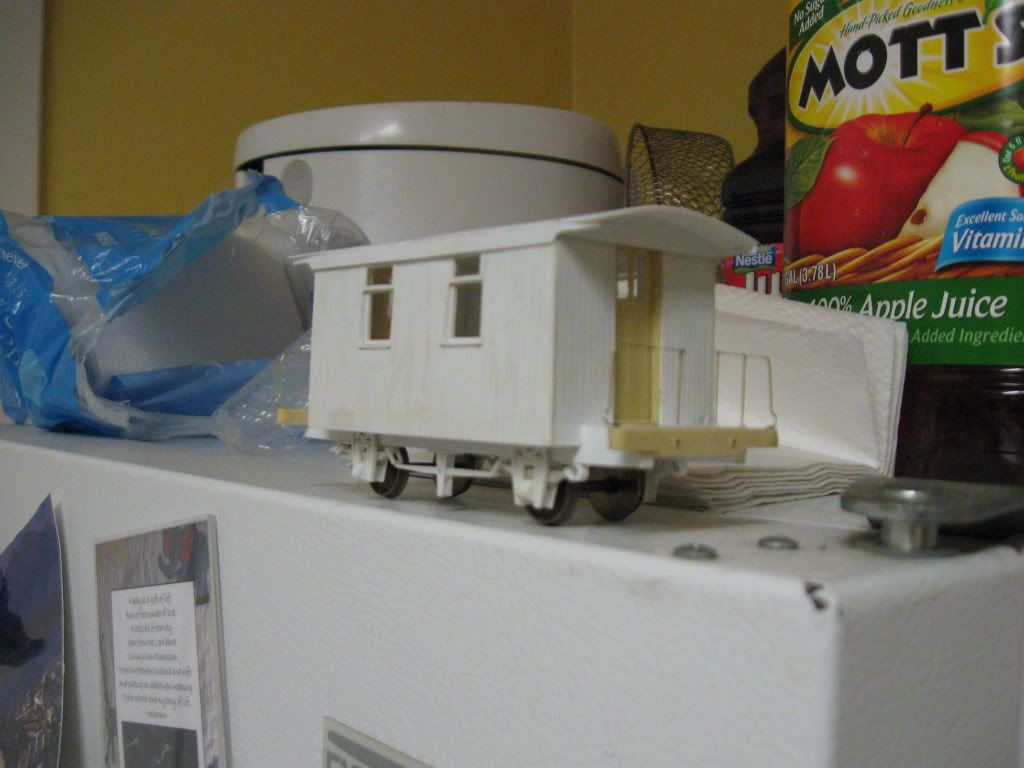In the begining, God created the Heavens and the Earth. He later created James Watt for the purpose of making the South Park Line possible. The South Park was built, largely in part, with the worst engineering practices of the day. This was made worse after Jay Gould performed a hostile takeover and turned it over to his Union Pacifc whom implemented worst management practices.
The South Park, like many other Colorado railroads, was built as an outgrowth of the hole digging movement of late 19th century Colorado. The railroads helped facilitate the digging of holes in the ground by providing links with cities such as Denver. By the end of the 19th century, most people had figured out that the digging of holes in the ground wasn't a very profitable business, and few new railroads were built. A (or perhaps THE) major reason for the hole digging bubble was that the US government subsidized the digging of holes in the ground until 1893, but the UP's WMPs of the South Park Line had already driven the hole digging business to its competitors (namely, the evil Denver & Rio Grande).
I am fascinated by this period in history. Many of the cost cutting practices of the railroads built in Colorado make them all the more interesting. The most noticeable cost cutting practice was to build the railroads according to narrow gauge practices. Nearly every railroad you've ever seen has rails 4'8.5" apart (your car's wheels are the same width as well); most Colorado railroads were built to a 3' gauge instead. While their was a flawed rational advanced by Robert Fairlie to promote it, it did have the advantage of being far cheaper to construct a 3' gauge railroad through the mountains (with all the trestles, tunnels, and rock shelves) than a standard gauge railroad. In the long run, the most profitable lines were rebuilt to standard gauge since it was kind of difficult to send their cars with 3' gauge wheels over 4'8.5" gauge rails.
The Colorado narrow gauge movement was started by General Palmer whom sought to connect Denver to the Rio Grande with his Denver & Rio Grande, and then on to Mexico City. His D&RG got as far as Santa Fe, NM...he also started a Mexican company that did connect Mexico City to the Rio Grande River. His inspiration was the 1'11.5" gauge
Festiniog Railway in Wales. His D&RG was caught in a variety of railroad wars (which did involve gunmen & courts) and became an East-West line instead of a North-South. This brought it into conflict with the South Park Line...racing to get to Gunnison, CO and competing over the lucartive Leadville business.
The South Park Line, started in 1874, connected Denver to Como (which is in the South Park), and then had a line going south to Gunnison with a branch to Baldwin and a line crossing the continental divide twice to reach Leadville. The railroad's full name, the Denver, South Park, & Pacific, reveals the original intent of getting to the Pacific Ocean...but never made it out of Colorado. What was achieved, was one of the most scenic lines ever constructed anywhere in the world and a lot of dramatic photography preserved for posterity. at the close of the 19th century, the South Park was merged with its sister company, the Colorado Central, into the
Colorado & Southern...and then purchased by the Burlington Route. The last piece of the C&Sng was a section of the South Park's Leadville line which was converted to standard gauge in 1943. 5 narrow gauge locomotives survive from the C&S (and 2 standard gauge ones). Two locomotives started off as South Park engines and the other three arrived later. A few South Park passenger cars survive, and a 4 mile section of the Colorado Central is now a tourist railroad: the
Georgetown Loop.
I model the South Park Line in O scale....1:48th the real size...On3. I built my models from scale lumber, plastic, and brass. I use plans, carefully study pictures, and read to build accurate models. My layout occupies an 8'x15' space in our loft. The gracious Lady York has granted trackage rights for a yards to pierce the other half of the loft, but only after I've made appreciable progress on the current portion. This blog is going to be my railroad diary. I will fill it with pictures and thoughts on the construction process. It will also include my musings on other topics of interest to me such as the London, Brighton, and South Coast Railway.

This is my trackplan. There are three bridges: two small ones and one large trestle. It is an oval with three sidings. I'll probably have two stations. The first station is near the top left, a green rectangle. I am building a model of the Pitkin, CO depot for here. The second one probably be over by the small bridge at the bottom...based on the Almont, CO depot (on the evil D&RG's Crested Butte branch). When the mainline hits the curved trestle, the stream will hit a waterfall. I'd love to include a bit of the 2' gauge Gilpin Tramway, but I don't see a good way to do so.
Here is the current progess:

I'm also in the progress of painting & lettering one of the venerable South Park Cooke moguls:
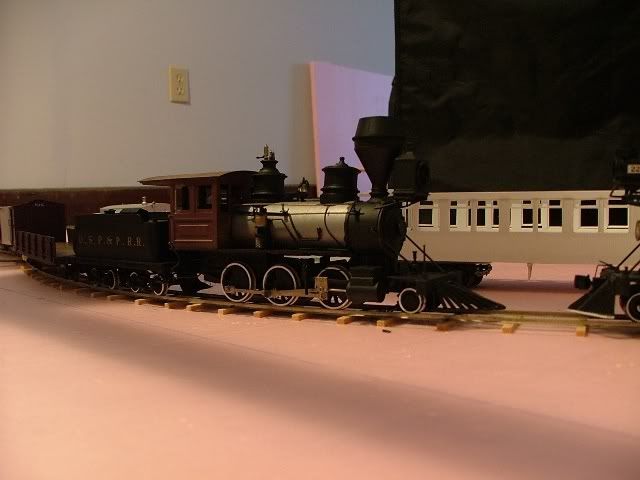
And I have an assortment of scratch built pieces of rolling stock at varying stages of completion:

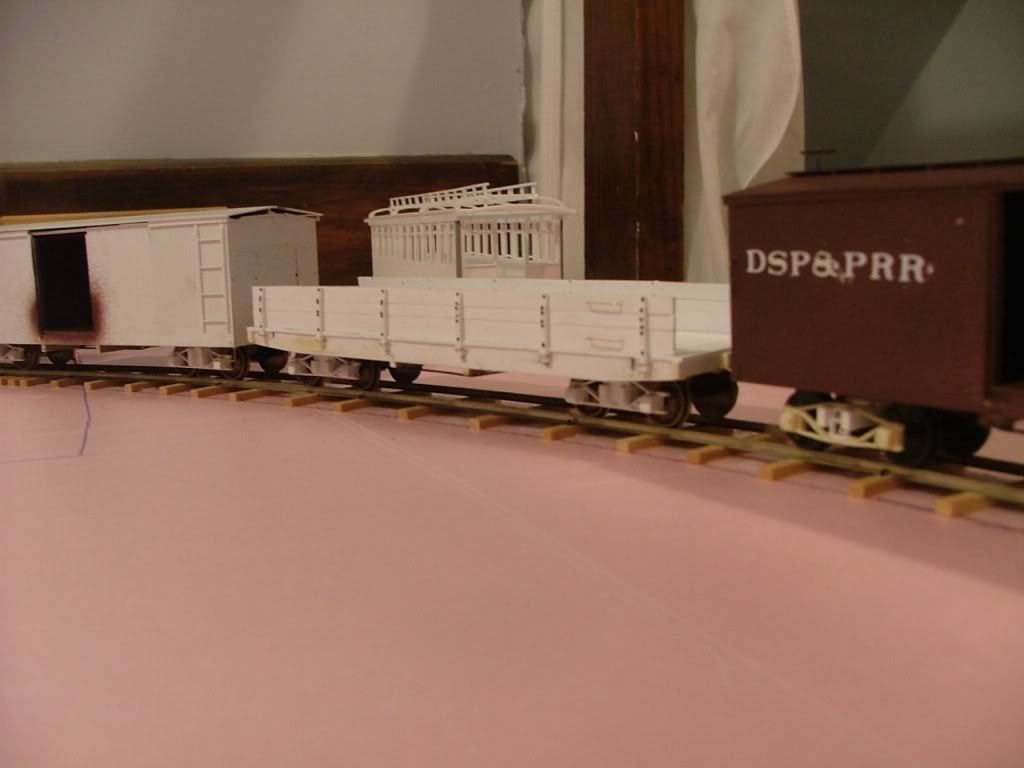
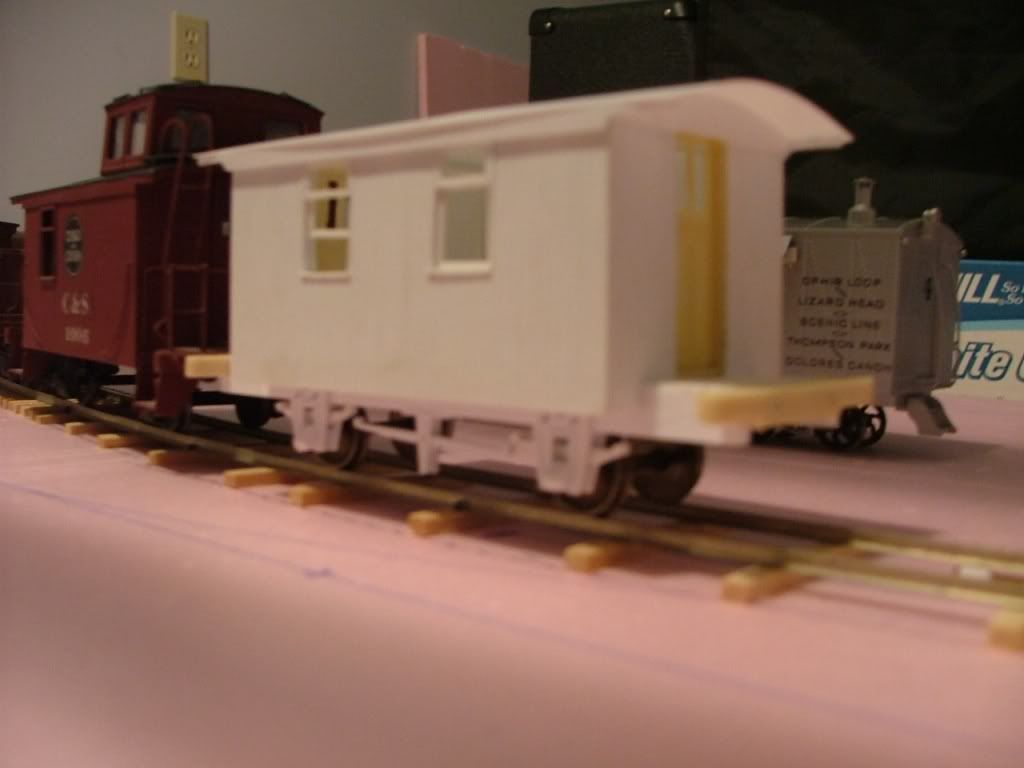
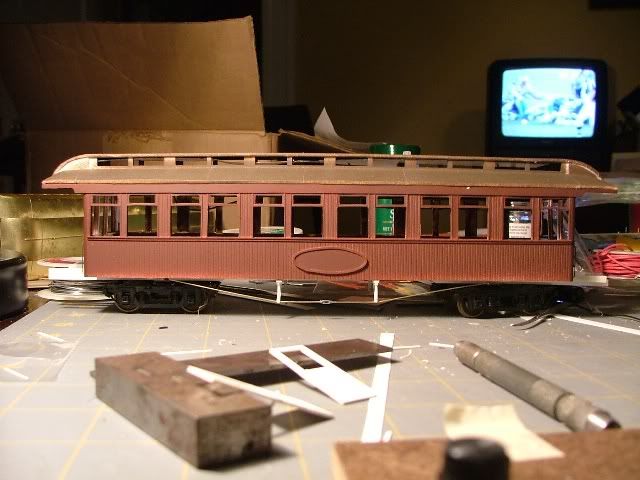
Additionally, there are a pair of flat cars, a second gondola, a lime car, and a baggage car at varying degrees of completion. There are also 9 cars and 4 locomotives that were not scratch built and are not pictured here, but polish my high iron.
Last night I worked on the brass hand rails for the waycar (South Park speak for caboose). They were made from 0.015" brass rod which was flatted for the tops.

A couple nights ago I soldered together the frame for my future 1883 Cooke 2-8-0. Her appearance will be very similar to her little sisters, the Cooke 2-6-0s. The South Park would use 4 of these to drag a 15 car coal train over Alpine Pass.


